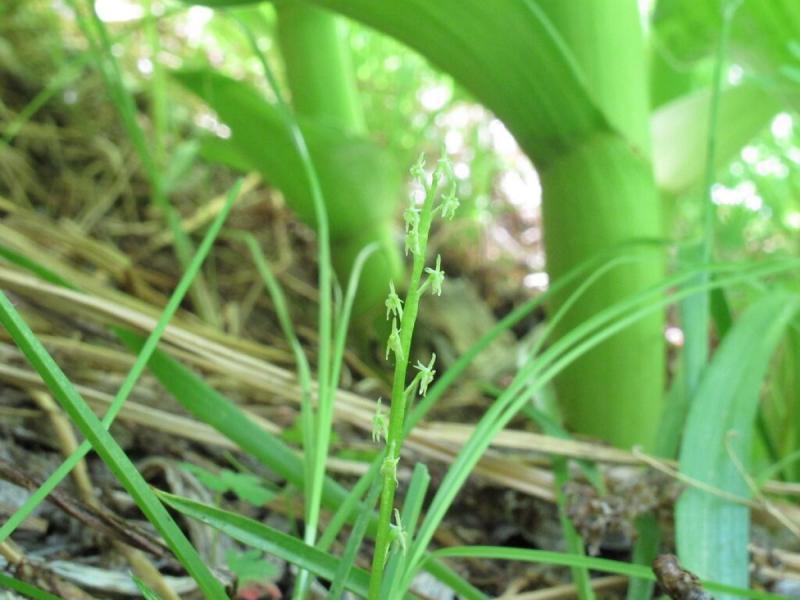Malaxis monophyllos
Also known as: The Single Leaf Malaxis or Achroanthes cilifolia Malaxis monophyllos var. obtusa Achroanthes monophyllos f. diphyllos Achroanthes acuminata Malaxis yunnanensis Malaxis monophyllos var. diphyllos Malaxis brachypoda f. bifolia Malaxis brachypoda Microstylis monophyllos var. diphyllos Microstylis muscifera var. nematophylla Malaxis monophyllos var. monophyllos Epipactis monophylla Dienia gmelinii Microstylis muscifera ssp. stelostachya Liparis japonica Malaxis monophyllos var. brachypoda Malaxis monophyllos f. triphyllos Malaxis monophyllos f. bifolia Malaxis muscifera var. stelostachya Malaxis monophyllos f. diphyllos Microstylis brachypoda Malaxis monophyllos ssp. brachypoda Malaxis taiwaniana Malaxis diphyllos Malaxis yunnanensis var. nematophylla Liparis inconspicua Microstylis arisanensis Microstylis diphylla Malaxis arisanensis Microstylis yunnanensis var. nematophylla Microstylis muscifera var. stelostachya Microstylis monophyllos var. obtusa Microstylis japonica Microstylis monophyllos ssp. brachypoda Microstylis yunnanensis Microstylis monophyllos var. bifolia Leptorkis japonica White Adder's Mouth in the subfamily: Epidendroideae
Native to: Austria Belarus China Finland France Hungary Italy Japan Mongolia Norway Romania Sweden Switzerland Ukraine
General Information
The Single Leaf Malaxis is a cold to cool growing epiphytic or terrestrial orchid belonging to the sub family Epidendroideae native to Austria, Belarus, China, Finland, France, Hungary, Italy, Japan, Mongolia, Norway, Romania, Sweden, Switzerland, and Ukraine.
Plant Description
Each new growth has numerous elliptic oblong shaped leaves
Flowers
Numerous blossoms appear during Summer and Spring
Blooming Season
- Spring
- Summer
Care Notes
These orchids have a fine root system that can quickly die back if left dry for too long, but also does not like to be kept wet, so water regularly but ensure that the mix is dry before watering.
Climate
Grows at low to high elevations.
Fertiliser
These plants do well with slow release fertiliser at the rate of 2-3 pellets per cup (250ml) of media. Additional fertiliser during the growth period may be beneficial, but not necessary.
Potting
These plants can be sensitive to repotting though should not require repotting regularly. Repotting should be done when the mix has broken down to the point that it doesn't absorb water or holds onto water for far too long, usually the plant shows a decline in growth as well. Repotting is best done after the growing season when the plant has died back.
The mix should be free draining, with a blend of 30% inorganic ingredients such as coarse sand, gravel or perlite, mixed in with about 70% organic ingredients such as peat, leaf litter or decomposed bark. Avoid commercial potting mixes as they can vary wildly and may contain "wetting agents" that can hold onto water for loo long, causing rotting and stunted growth.





















